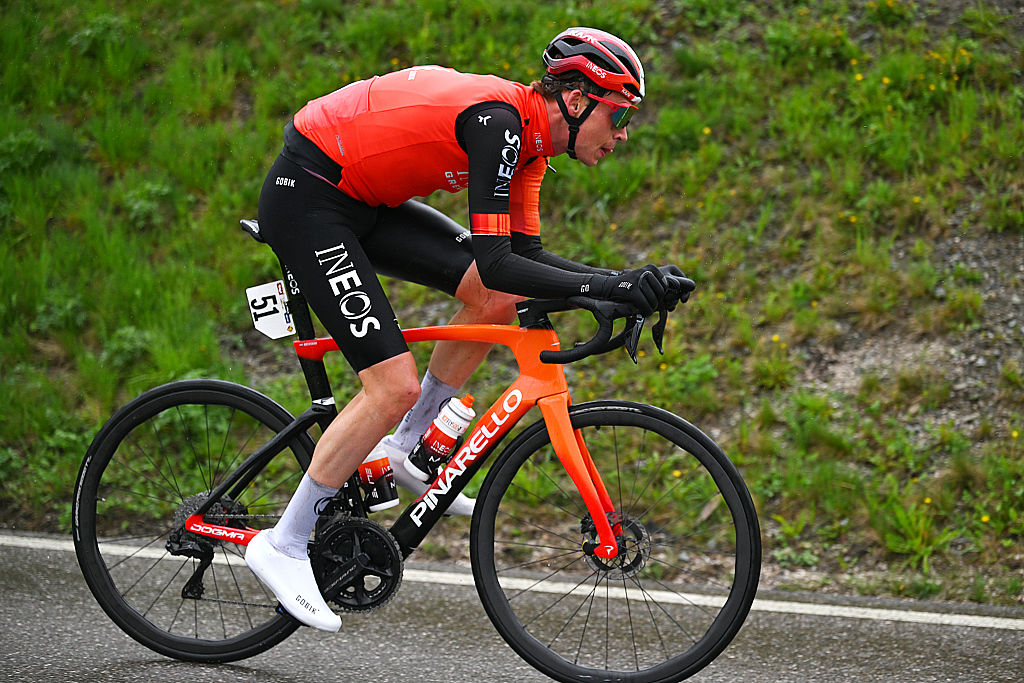
One of the biggest changes in professional cycling in the last five years has centred on fuelling. Rewind to the Giro d'Italia in 2018, when Chris Froome went on an 80km solo raid over the Colle delle Finestre, his strategy of eating up to 100g of carbohydrates per hour was unusual and the secret to his success.
Look at this year, though, and those huge, solo attacks are no longer particularly uncommon, and pro riders will take in over 90g of carbs per hour in just training rides, more in racing.
Ineos Grenadiers' Thymen Arensman, who went on his own 70km winning attack in the recent Tour of the Alps, gave an insight into his fuelling – and many other topics ahead of the Giro – in an AMA (Ask Me Anything) with the r/peloton Reddit community on Thursday.
After winning that stage in the Alps, Arensman explained in his winner's press conference that he had been trying to eat between upwards of 120g of carbs per hour, and that was likely the key to his success.
"I just went with feel and ate when I could and thought was a good moment to eat! I think I was at like 120-150 but that’s just guessing!" he explained on Reddit.
Taking on 150g of carbs per hour using energy gels could mean consuming more than five gels each hour, more depending on the brand, which is not easy on the digestive system.
"It’s training!," Arensman said of how riders are able to consume so much energy these days. "Like training your lungs/heart/mind you can train the gut! So that’s also what we do. Effort rides in training are also 90+.
"The main thing is training! If you do it out of nowhere of course your stomach will be destroyed if you didn’t train it!" Arensman added.
However, whilst gels and carbohydrate drinks are the most efficient way of getting carbs in – 150g of carbs in real food would be about six bananas, or 10 slices of bread – they're not the first choice for every rider.
Riders like Ironman triathlete and ex-Grenadier Cameron Wurf may be knocking back 700ml bottles full of energy gel, but even in this modern era of fuelling, real food has its place.
That might look like fruit, sandwiches, cakes, or rice cakes (think British flapjacks but made out of rice, not the puffed rice discs you see in supermarkets).
"Also on flat days or at the start of the stages I am probably a bit lower [in grams of carbs per hour] and I try to only eat solid food," Arensman said. "I prefer solid food but yeah when you go full you have no choice but to take gels!"
As well as his openness about fueling, Arensman is one of the few pro riders to share his watts data publicly on Strava. On that stage-winning ride at the Tour of the Alps, Arensman's weighted average power was 353 watts, per his Strava.
Between training rides and pre-race preparations, Arensman answered questions about fueling and much more on Reddit on the eve of the Giro, promising to be back to answer more on Thursday afternoon.







